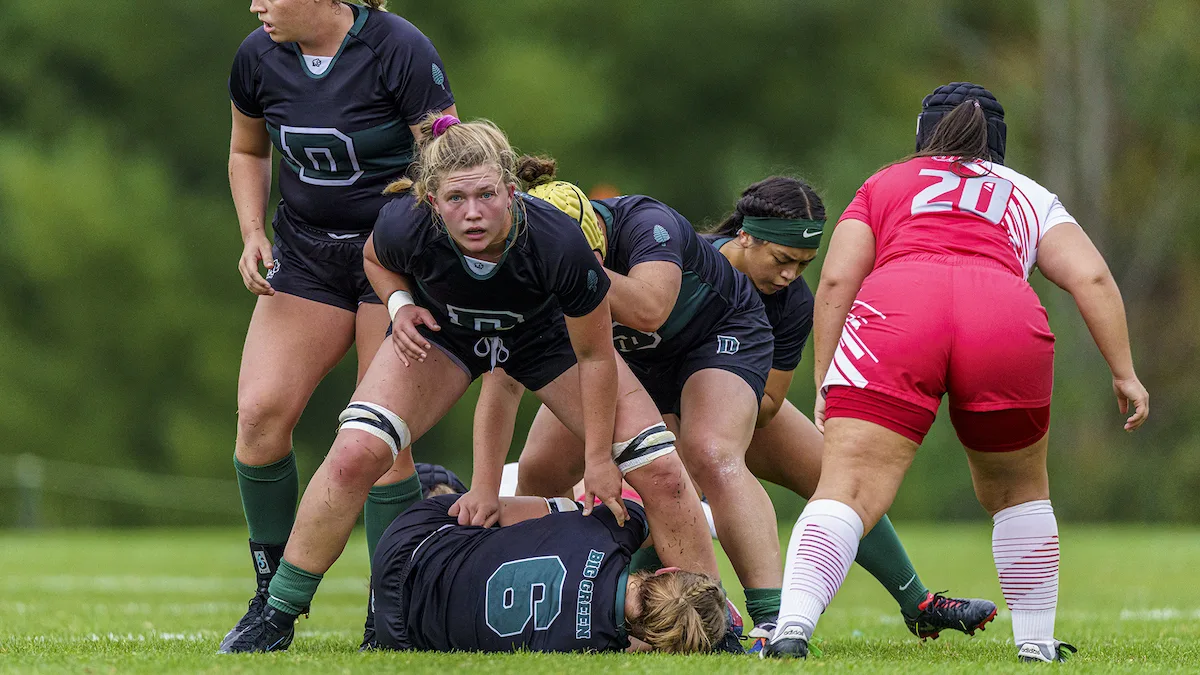Unlocking the Consequences and Strategies for Handling Side Entries in Rugby
When the intense battle on the rugby field unfolds, the players are not only physically tough but also mentally sharp, constantly strategizing and adapting to the ever-changing dynamics of the game. Among the various challenges faced by rugby players, the side entry is a maneuver that can significantly alter the course of a match. In this comprehensive article, we will delve into what happens when a player enters the breakdown from the side, exploring its implications, penalties, and strategies for both offensive and defensive teams.
The Art of Entering the Breakdown
To understand the consequences of entering the breakdown from the side, one must first grasp the fundamentals of this technique. The breakdown in rugby occurs when a player is tackled and brought to the ground. Subsequently, the ball carrier must release the ball, and both teams contest for possession by attempting to secure the ball within the ruck or maul.
The Side Entry Defined
A side entry, as the name suggests, involves a player entering the breakdown from the side rather than through the gate, which is the legal entry point. The gate refers to the area immediately behind the last foot of the hindmost player in the ruck or maul. A side entry is considered illegal and can result in various consequences, depending on the context and the referee’s judgment.
The Implications of a Side Entry
1. Penalties
The most immediate consequence of a side entry is the awarding of a penalty to the opposing team. The referee will blow the whistle, and the non-offending team gains an advantage in terms of field position and possession. This can be a crucial turning point in a match, as penalties often lead to scoring opportunities.
2. Risk of Injuries
Side entries can also pose significant risks to players’ safety. When a player enters the breakdown from the side, there is a higher likelihood of dangerous collisions. Players involved in the ruck or maul may not be prepared for the unexpected side entry, increasing the risk of head and neck injuries, among others.
3. Disruption of Team Strategy
For the team committing the side entry, their actions can disrupt their own defensive strategy. When a player enters the breakdown illegally, they may leave gaps or vulnerabilities in the defensive line, making it easier for the attacking team to exploit these weaknesses and gain ground.
Legalities and Interpretations
The consequences of a side entry can vary depending on the referee’s interpretation of the situation and the specific circumstances of the incident. It is essential to note that rugby referees are responsible for ensuring fair play and safety on the field, and their judgments are often subjective.
Referee Discretion
In rugby, referees hold a significant level of discretion when making decisions, including those related to side entries. They consider factors such as the player’s intent, the speed of play, and the safety of the participants. Referees may opt for different actions, ranging from verbal warnings to yellow or red cards, depending on the severity of the side entry and its potential impact on the game.
Impact on the Flow of the Game
One key aspect that referees assess is how a side entry affects the flow of the game. Rugby values continuous play and a fair contest for possession. If a side entry disrupts this flow, the referee is more likely to penalize the offending player or team.
Strategies for the Offensive Team
Now that we have explored the implications and legalities of side entries let’s examine the strategies that the offensive team can employ to exploit a side entry by the opposition.
1. Quick Ball Release
When an opposing player enters the breakdown from the side, the ball carrier and supporting players should aim to release the ball quickly. This prevents the defending team from fully establishing themselves in the ruck or maul and allows the attacking team to maintain momentum.
2. Exploiting the Gap
A side entry can create a gap or weakness in the defensive line. Skilled attackers can exploit this gap by sending their runners through the space created by the illegal entry. This can lead to significant gains in territory and potentially result in scoring opportunities.
3. Communication and Awareness
Players on the offensive team must communicate effectively and remain aware of the situation. Recognizing a side entry and reacting promptly can make the difference between a missed opportunity and a successful attack. Awareness and quick decision-making are crucial in such scenarios.
Strategies for the Defensive Team
On the other side of the equation, the defensive team must be prepared to counter the offensive strategies that exploit a side entry. Let’s explore the defensive strategies that can help mitigate the impact of a side entry.
1. Protect the Ball
The defensive team should focus on securing the ball at the breakdown, even in the presence of a side entry. This requires strong body positioning and coordination among the defending players to maintain possession or slow down the ball’s release.
2. Close the Gap
Defenders must work to close the gap created by the side entry as quickly as possible. This involves shifting their positions and filling in the space left by the illegal entry. By doing so, the defensive team can limit the attacking team’s ability to exploit the gap.
3. Physicality and Aggression
When dealing with a side entry, defenders should respond with physicality and aggression. This can disrupt the attacking team’s plans and create turnovers or penalties in the defensive team’s favor. However, defenders must remain within the bounds of the rules to avoid penalties themselves.
The Role of Referees and TMOs
In modern rugby, technology plays a significant role in decision-making. Referees have the option to consult with the Television Match Official (TMO) to review questionable incidents, including side entries. This additional layer of scrutiny ensures fair play and accurate judgments.
TMO Review Process
When a referee or TMO reviews a side entry, they consider various factors:
- Camera Angles: The TMO has access to multiple camera angles, allowing them to assess the incident from different perspectives.
- Intent: Determining the player’s intent can be challenging, but it plays a crucial role in the decision-making process. Accidental side entries may receive different judgments than intentional ones.
- Safety: The safety of the players involved is a top priority. If a side entry poses a significant risk of injury, it may result in a stricter penalty.
Impact on the Game
Referees and TMOs also consider how a side entry impacts the flow of the game. If it leads to a significant advantage for one team or disrupts the natural progression of play, it is more likely to result in a penalty or card.
Common Mistakes and Misconceptions
To gain a deeper understanding of side entries in rugby, it’s essential to address common mistakes and misconceptions surrounding this aspect of the game.
1. Confusion with Offside
One frequent misconception is the confusion between a side entry and being offside. While both involve improper positioning on the field, they are distinct violations. Offside occurs when a player is in front of the last feet of their teammates during open play or a set piece, while a side entry relates specifically to the breakdown.
2. Clean-Outs and Side Entries
Clean-outs, where players from both teams compete for possession of the ball, can sometimes appear similar to side entries. However, clean-outs are legal and involve players entering the breakdown through the gate. It’s essential to differentiate between these two actions to ensure fair play.
3. Inconsistent Enforcement
Another misconception is that referees enforce side entry rules inconsistently. While interpretations may vary, referees strive to apply the laws consistently and fairly. Factors such as intent, player safety, and the flow of the game influence their decisions.
Evolution of the Game
Rugby, like many sports, evolves over time, and the approach to handling side entries has also changed. The sport’s governing bodies continually review and update the laws to enhance player safety and maintain the integrity of the game.
Law Changes
In recent years, there have been adjustments to the laws governing the breakdown, with a focus on player safety. These changes aim to reduce the risk of dangerous collisions and ensure that players enter the breakdown from the correct positions.
Player Education
As the game evolves, player education becomes increasingly important. Coaches, players, and referees must stay updated on the latest rule changes and interpretations. This knowledge empowers individuals to make informed decisions on the field and contributes to fair play.
Side Entry
The side entry is a critical aspect of rugby, with profound implications for the outcome of matches. Understanding the consequences, strategies, and evolving nature of side entries is essential for players, coaches, and fans alike. While it can be a game-changing maneuver, it also carries risks and responsibilities, both for those executing it and those enforcing the rules. Rugby’s continuous evolution ensures that the sport remains exciting and challenging, making it a true test of skill, strategy, and sportsmanship on the field.

